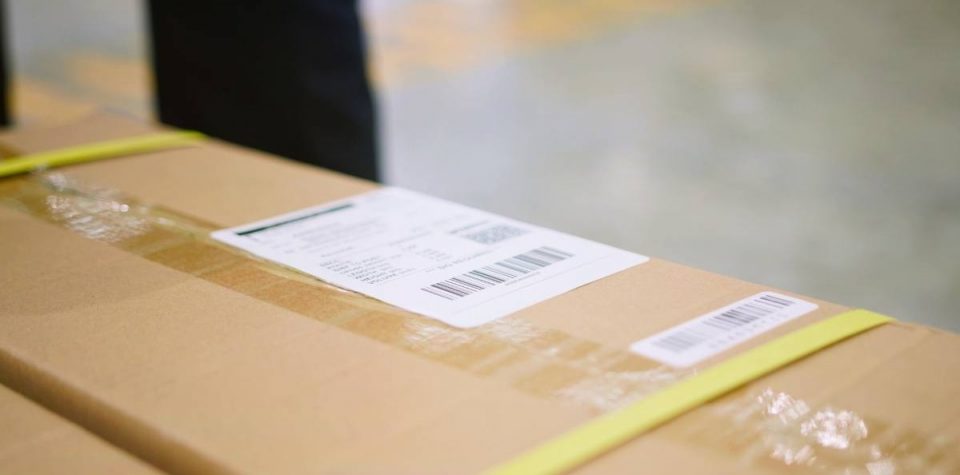Table of Contents:
- The History of Cardboard
- From silkworms to shipping cartons
- Cardboard, Cardboard, Everywhere
- The world’s biggest box
- The Cardboard Cathedral
- Boxed Up and Ready to Go
With a history dating back to the mid-19th century, cardboard is a surprisingly versatile material that has been used for everything from transporting silkworms to building cathedrals.
“Cardboard box? You were lucky!”
—Monty Python’s Flying Circus, the Four Yorkshiremen sketch.
As a logistics operator, you’ll be familiar with cardboard boxes. From the small cubes encasing gadgets and games to the 48-litre jobs for the big ticket items and for moving house, those brown boxes are pretty much the basic building blocks of the delivery caper.
But although cardboard boxes are a standard item in the logistics industry, have you ever wondered about the history of these ubiquitous cubes and rectangles? Here at TransVirtual, we usually write blog posts about technological trends in logistics software. But we also like digging into the history of the delivery industry, both here in Australia and elsewhere. So today, we are going to delve into the history of cardboard and unbox (pardon the pun) some of the unusual ways that cardboard has been put to use over the years.
The History of Cardboard.
Cardboard is a rigid or semi-rigid paper-based material made from a combination of wood pulp and recycled paper. There are two main types of cardboard:
- Paperboard. This is a thick paper most commonly used for things such as cereal boxes, playing cards, juice boxes, book covers and greeting cards. It is heavier than ordinary paper and is generally 0.25 millimeters or more thick. According to standards set down by the ISO, paperboard is paper with “a base gram mage weight of 224 g/m² or above.”
- Corrugated cardboard. This is the type of cardboard most commonly used in boxes. It is composed of a fluted (wavy) layer of waxy paper sandwiched between two flat layers of thick, paper. The fluted layer gives corrugated cardboard boxes much of their strength.
The first cardboard boxes were made by hand but in the early 20th century, the advent of machines that could produce them in large quantities made them more accessible and affordable.
From silkworms to shipping cartons
The English firm of M. Tiverton & Son is credited with producing the first commercial paperboard box in 1817. German manufacturers were also making paperboard around the same time.
Boxes made from paperboard were first used in the transportation industry in France during the 1840s, when silk manufacturers began using them to carry Bombyx mori moths and their eggs. The Valréas area of France became a major hub for the manufacture of cardboard due to its proximity to forests where the trees used to make paperboard (pine, spruce, and fir) grew in abundance.
Corrugated paper was patented in England in 1856 and was originally used as a liner to stiffen the tall hats that were much in vogue at the time. But corrugated boxboard was not patented and used as a material for shipping goods until December 20th, 1871. The patent was issued to Mr Albert Jones of New York for single-sided corrugated board. Jones used corrugated board for wrapping bottles and glass lantern chimneys.
The Scottish-born industrialist Robert Gair invented the pre-cut cardboard box in 1890. Gair’s invention came about as a result of an accident while he was working as a printer and papermaker in Brooklyn. During the printing of an order of seed bags, a metal ruler that he normally used to crease the bags shifted in position and cut through them. Gair discovered that by cutting and creasing the cardboard in one operation he could prefabricate the boxes with all their folds and dimensions in place, ready for the customer to use.
The ubiquitous cardboard box we know and love was born.
Cardboard, Cardboard, Everywhere.
The humble cardboard box has been a staple of the delivery industry for decades. It forms an essential part of Australia’s logistics industry and, indeed, the worldwide transit of goods. According to data analysts Statista, the global output of cardboard in 2020 was estimated to be 66 million tonnes. And since the COVID-19 pandemic — which saw a massive spike in e-Commerce — the global output of cardboard in 2022 rose to 72 million tonnes. Now, that’s a LOT of cardboard!
The world’s biggest box
People will do anything to set a record. So it’s no surprise that someone set out to create the world’s biggest cardboard box! It was built in 2016 at a packaging plant operated in the Netherlands by the Dutch firm Smurfit Kappa. The giant box measured 40 metres by 20 metres: not exactly something you could fit through the side door of a HiAce van, but pretty spectacular.
The Cardboard Cathedral
Following the 2011 Christchurch Earthquake, which destroyed the old stone cathedral in the heart of the largest city on the South Island of New Zealand, a temporary cathedral was erected using cardboard tubes for its frame. The Cardboard Cathedral, as the citizens of Christchurch nicknamed it, was designed by the Japanese architect Shigeru Ban who specializes in designs that incorporate paper, cardboard and other unconventional materials.
The building he created is a spectacular place to visit, with its rows of cardboard tubes soaring upwards to form an A-frame interior lit by natural light and stained-glass. You can take a virtual tour of the Cardboard Cathedral by clicking here.
Boxed Up and Ready to Go.
Cardboard boxes are an essential part of the delivery industry in Australia. They are recyclable and endlessly customizable, so whatever the size and shape of the stuff you want to ship, store, protect or hold, there’ll be a cardboard option to use.
Cardboard is lightweight, eco-friendly, durable and the perfect choice for both shipping and storage. So next time you’re out in your warehouse gazing at the piles of boxes stacked up neatly on rows of shelves, or driving around the streets of some Australian city with a load of goods encased in those brown cubes made of paper, you can reflect that you are part of a long tradition that stretches all the way back to the middle of the nineteenth century and will continue long into the future.
And as always, the crew at TransVirtual will keep on thinking outside the box to provide delivery logistics solutions to keep your shipments flowing successfully and your customers happier than a box of birds.



